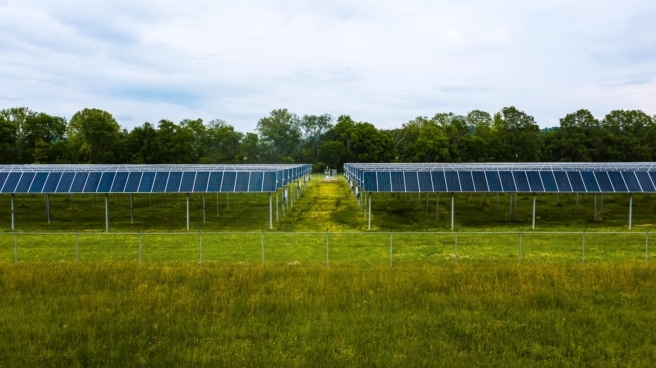

solar energy field
Renewable Energy break a historical record in Spain and already account for more than half of the country’s electricity consumption, with a 50.8% share of the national balance in 2023, up from 42.2% in 2022, according to data released Tuesday by the Ministry of Ecological Transition and Demography. Trial. Except renewable energy production In Spain, it exceeded 135,000 gigawatt/hour (GWh) in 2023, while it remained at 116,695 GWh last year.
Renewable Energy win historical record in Spain after the close of 2023 with a contribution to mixing national generation more than 50% (50.8%) with more than 135,000 GWh.
This is evident from Red Eléctrica’s estimates, which, as every year, are ahead of the main system indicators prepared on the basis of preliminary data as of December 14.
We have become a true European benchmark in the integration of renewable energy sources: we are the second country that produces the most wind and solar energy.
For Beatriz Corredor, President of Redeia, the parent company of Red Eléctrica, “these figures are irrefutable proof that the ecological transition in our country is steadily advancing. We have become a true European benchmark in renewable energy integration: We second country that produces the most wind and solar energy. But we must continue to work towards achieving our 2030 goals.”
In the renewable energy sector, the contribution of wind and solar photovoltaics will be particularly significant in 2023. Both technologies are estimated to cap another exceptional year as they are expected to exceed their maximums both production and participation in mixing National.
Wind energy will maintain leadership in the generation structure with a share of almost 24% and a record capacity of 63,700 GWh. For its part, photovoltaics will be in fourth place in the ranking. mixing from 14%, and its production will exceed 37,000 GWh, which is almost 34% more than in fiscal year 2022.
The first positions in the generation structure will be completed by nuclear – second position with 20% – and combined cycle – third in the ranking with 17% – technologies, the production of which will experience a decline in 2023. Would have been placed in fifth position hydraulics (9.5% of mixing), which, thanks to increased precipitation, will reach 25,500 GWh. This figure is higher than that recorded in 2022 as it was a particularly dry year, leading to the lowest level of hydraulic fluid production since records began.
Thanks to the renewable contribution, this exercise will end the same way as lower CO emissions2 equivalent obtained from electricity production. Projections point to a figure of less than 32 million tons of CO.2 equivalent, which would represent a decrease of more than 28% compared to 2022. These data will mean that emission-free generation will reach 72% of all generation.
2023, the year that broke all records
In 2023, the concept of “record” was forever associated with renewable energy as they broke all their records. In this sense, and taking into account the records of Red Electrica, January became the most renewable month in history, resulting in more renewable GWh being produced, up to a total of 13,542 GWh. For my part, the last month November was the year with the highest quota these technologies in mixing (59.6%). Finally, November 3rd marked an all-time high in daily renewable participation (73.5%).
On the other hand, other significant daily records were recorded during this year: on November 11, the share of emission-free electricity production (87.9%); October 26—daily wind generation quota (53.8%); and June 10 – quota for photovoltaic energy production (22.4%).
Other quantities: demand and international exchange
For its part, electricity demand will decline by 2.1% in 2023 compared to last year, once the effects of operation and temperature are taken into account. In gross terms, demand could be around 244,000 GWh, down 2.6% from 2022, according to preliminary data from Red Eléctrica.
By system, gross electricity demand will decrease by 2.8% in the peninsular grid and by 0.9% in the Balearic Islands. In its turn, Demand in the Canary Islands will increase by 2.8% compared to 2022.
The moment of greatest demand in the peninsula’s energy system this year was recorded in winter, namely on January 24 at 20:43 with a peak of 39,101 MW. This is about the data is slightly higher than the previous yearreached 14 July 2022 at 14:19 (38,284 MW).
On the other hand, for the second year in a row, the Spanish electricity system is expected to close the year with an export balance close to 15,000 GWh, thanks to international exchanges, mainly with France and Portugal.
Source: El Independiente